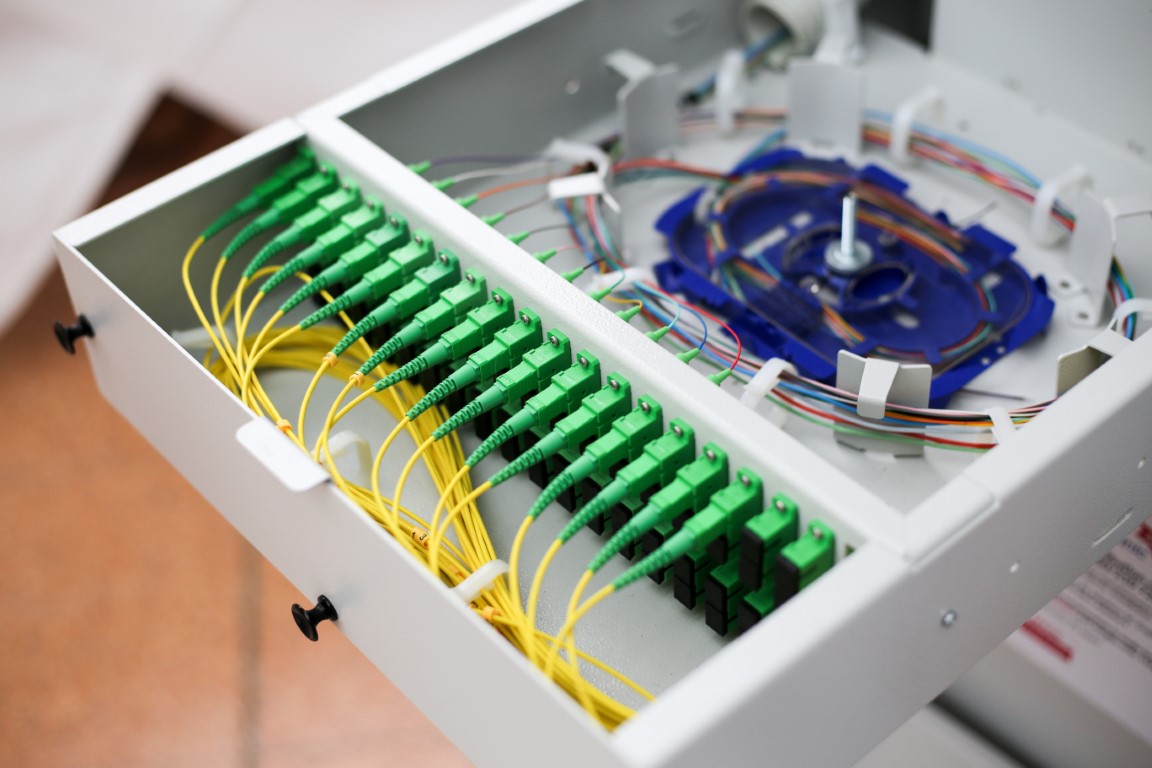
The GTE Elastomeric splice (still available from Corning) uses soft elastomers to hold the fibers in position. The complexity and expense of this, especially compared to a simple V-groove, limited its use. The fibers follow the grooves made by the joint of two rods. This method has a more complex alignment mechanism, made from four small glass rods fused together with a bend in the middle. It's elegant design and good performance has made it one of the most popular mechanical splices. The 3M Fiberlok is a version of a V-groove splice that uses a metal stamping inside a plastic case to both align fibers and crimp them. The Grooved alignment plates can be made of many types of materials and are quite inexpensive. They work for single fibers or even for fiber ribbons as shown here. V-groove splices are quite simple and work well. This type of splice works well with UV-cured adhesive as well as index-matching gel between the fibers. The simplest method of making a mechanical splice is to align two fibers in a small glass tube with a hole just slightly larger than the outside diameter of the fibers. The biggest difference between mechanical splices is the way the fibers are aligned. A relatively simple cleaver and some cable preparation tools are all that's needed, although a visual fault locator (VFL) is useful to optimize some types of splices. The advantage of mechanical splices is they do not need an expensive machine to make the splices. Of course most prepolished splice connectors use an internal mechanical splice (several actually have fusion splices) so the mechanisms and techniques described here apply to those also.

They are also used - without crimping the fibers - as temporary splices for testing bare fibers with OTDRs or OLTSs. Mechanical splices are most popular for fast, temporary restoration or for splicing multimode fibers in a premises installation. The splice component itself, which includes a precision alignment mechanism, is more expensive than the simple protection sleeve needed by a fusion splice. Mechanical splices generally have higher loss and greater reflectance than fusion splices, and because the fibers are crimped to hold them in place, do not have as good fiber retention or pull-out strength. Mechanical splices are used to create permanent joints between two fibers by holding the fibers in an alignment fixture and reducing loss and reflectance with a transparent gel or optical adhesive between the fibers that matches the optical properties of the glass. Splices, from left, fusion splice, Elastomeric, Ultrasplice, Camlock, FiberLok, AT&T Rotary Splice

Table of Contents: The FOA Reference Guide To Fiber Optics The FOA Reference For Fiber Optics -Mechanical Splices


 0 kommentar(er)
0 kommentar(er)
